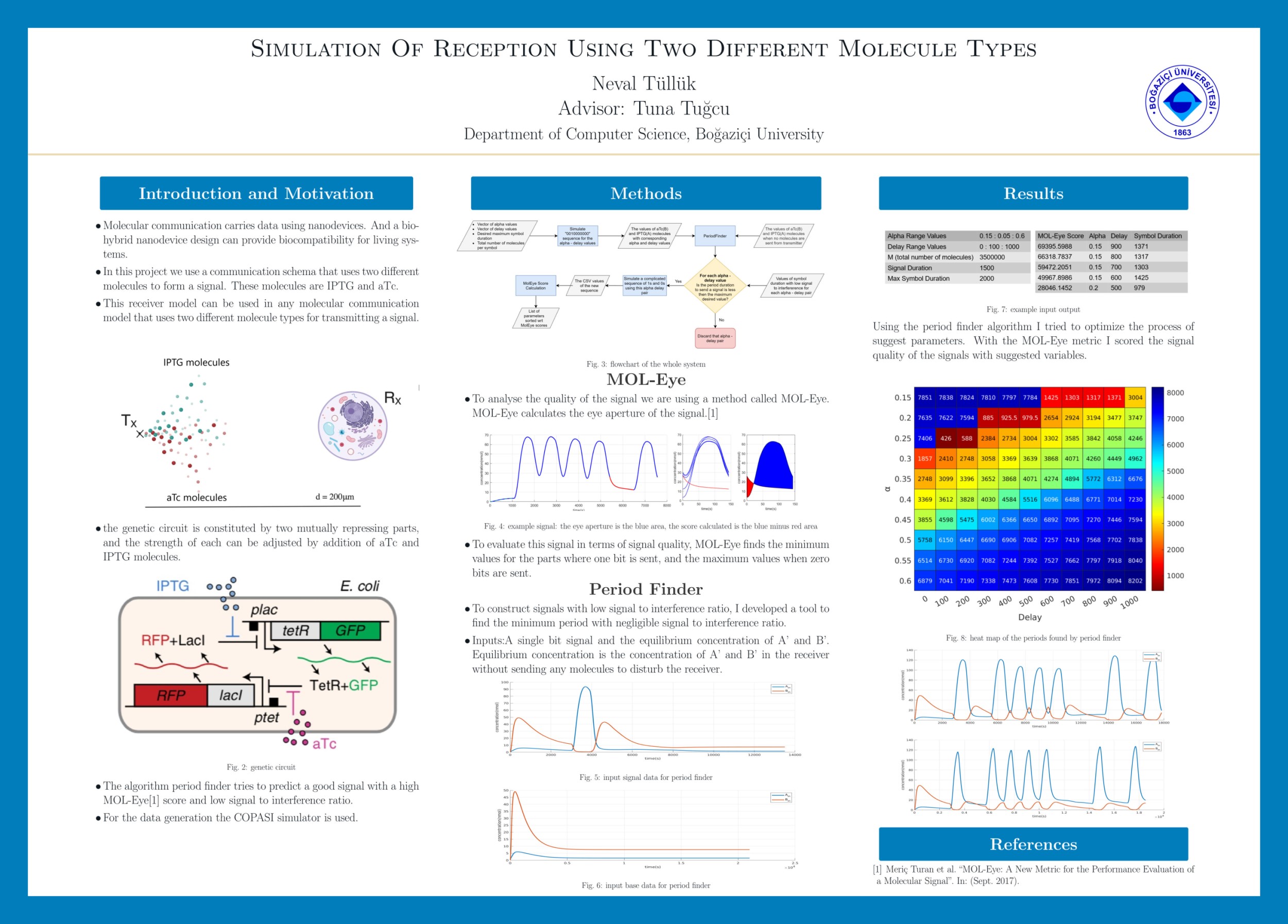Simulation of Reception Using Two Different Molecule Types
Molecular communication is a very useful way to carry data using nanodevices.

Molecular communication is a very useful way to carry data using nanodevices. And a bio-hybrid nanodevice design can provide biocompatibility for living systems. In this project we are trying to design a realistic bio-hybrid nanodevice that can be used as a receiver in a model where molecular communication via diffusion is used for data transmission. The signaling model used in this project has two different molecules in the intra cellular level, one for carrying the data and the other for shaping the long tail of the first signal and to decrease signal to interference ratio. There are two different genetic models for the receiver, and in those two models the molecules used are also different from each other. At the receiver side, these signals are used to control the synthesis of the two molecules which forms a compound together. Doing so, the density of the molecule that is synthesized with the arrival of the data signal can be dropped when the second molecule arrives from the sender to the receiver, and with this approach it will be possible to create predictable cellular applications since we can manipulate the data signal. The algorithm developed can suggest parameters to generate a data signal with low signal to interference ratio. The parameters suggested are the quantity of the both molecules, the delay between the emission time of this two molecules, and the symbol duration. The system also scores the quality of the signal using the MOL-Eye metric.
Poster: https://drive.google.com/file/d/1U_z6W3S3V2lBpE4A99FgzQFaKhf08iSz/view?usp=sharing
Video: https://drive.google.com/file/d/1YoIt3u-eqOzj62YqGHxmFUDxCNFBnbAm/view?usp=sharing